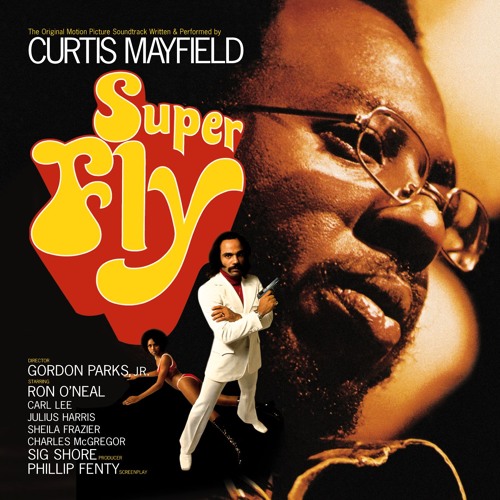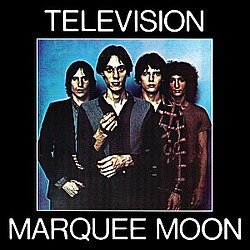 When Aerosmith released “Sweet Emotion” in 1975, the band was still carving out its identity amid the turbulent landscape of 1970s rock. Coming off the success of their previous albums, the Massachusetts-based group wanted to create a song that captured their raw energy, rebellious attitude, and bluesy roots, while also appealing to a wider audience. “Sweet Emotion” emerged as a perfect storm of slinky basslines, hypnotic grooves, and Steve Tyler’s distinctive vocals, creating a track that is at once sultry, edgy, and irresistibly catchy. The song was a turning point for Aerosmith—it became their first major hit, reaching the Top 40 and establishing the band as one of the leading forces in hard rock, a status they continue to hold decades later.
When Aerosmith released “Sweet Emotion” in 1975, the band was still carving out its identity amid the turbulent landscape of 1970s rock. Coming off the success of their previous albums, the Massachusetts-based group wanted to create a song that captured their raw energy, rebellious attitude, and bluesy roots, while also appealing to a wider audience. “Sweet Emotion” emerged as a perfect storm of slinky basslines, hypnotic grooves, and Steve Tyler’s distinctive vocals, creating a track that is at once sultry, edgy, and irresistibly catchy. The song was a turning point for Aerosmith—it became their first major hit, reaching the Top 40 and establishing the band as one of the leading forces in hard rock, a status they continue to hold decades later.
Recorded for their album Toys in the Attic, “Sweet Emotion” was the product of a band that had faced internal struggles, financial hardships, and interpersonal tensions. These very conflicts would fuel the rawness and tension embedded in the track. From the hypnotic opening bassline to Joe Perry’s grinding guitar riffs, every element of the song reflects a simmering intensity. Its layers of sound—from Tom Hamilton’s funky bass groove to Steven Tyler’s distinctive talk-singing—created a sonic blueprint that would influence countless rock songs to follow. “Sweet Emotion” was more than just a single; it was a statement, a declaration that Aerosmith had arrived and that their blend of blues, hard rock, and irreverent swagger was uniquely their own.
The Birth of a Hard Rock Anthem
By 1975, Aerosmith had been through the rigors of the rock world. Their first three albums had built a loyal following, but widespread commercial success had eluded them. “Sweet Emotion” was born from a mix of creative frustration and collaborative chemistry between Steven Tyler and guitarist Joe Perry, who were known for both their artistic synergy and their occasional clashes. The song was an attempt to channel tension and emotion into a track that would resonate with fans and showcase the band’s musical prowess.
The opening of “Sweet Emotion” is iconic—a talk box effect by Joe Perry on his guitar immediately sets an otherworldly, almost hypnotic tone. Layered underneath is Tom Hamilton’s bass line, one of the most recognizable in rock history. Its slow, pulsating groove contrasts with the electric guitar, creating a tension that draws the listener in before the vocals even begin. This combination of instruments and effects exemplifies Aerosmith’s experimental yet accessible approach.
Lyrical Tension and Personal Conflict
The lyrics of “Sweet Emotion” are rife with personal conflict, bitterness, and the complexity of relationships. Steven Tyler’s vocal delivery ranges from melodic to snarling, capturing both longing and frustration. The song’s themes are partly inspired by the band’s internal struggles—tensions with management, personality clashes, and the pressures of fame. Tyler has acknowledged in interviews that the song addresses his complicated feelings about success and interpersonal betrayals.
Lines like “You’re talkin’ to me, boy / You’re talkin’ to me” convey a sense of confrontation, of standing one’s ground amidst chaos. The lyrics are both intimate and universal, allowing listeners to project their own experiences of anger, desire, and betrayal onto the song. It’s a rare instance where personal catharsis becomes collective empowerment—a hallmark of Aerosmith’s greatest work.
Musical Structure and Innovation
Musically, “Sweet Emotion” is notable for its innovative structure. The song begins with a slow, simmering intro featuring percussive maracas and the groaning bassline. Steven Tyler’s voice enters with a half-spoken, half-sung delivery, creating a sense of intimacy and tension. As the track builds, Joe Perry’s guitar emerges with both rhythm and lead lines, including his pioneering use of the talk box, adding a futuristic, almost psychedelic texture to the song.
The chorus, with its hypnotic refrain of “Sweet emotion,” delivers both release and emotional payoff. The interplay between Tyler’s vocals and Perry’s guitar is electric, highlighting the synergy that defined Aerosmith’s sound. The bridge introduces a sudden shift, a dynamic change that underscores the song’s unpredictability and keeps the listener engaged. Unlike conventional pop structures of the time, “Sweet Emotion” thrives on tension and release, on mood and attitude, which helped it stand out on radio and in live performances alike.
Chart Success and Critical Acclaim
Upon its release, “Sweet Emotion” became Aerosmith’s first Top 40 hit, peaking at number 36 on the Billboard Hot 100. While modest by today’s standards, the song’s impact was far greater than chart placement. It introduced the band to a broader audience and showcased their ability to merge hard rock aggression with radio-friendly hooks. Critics praised its inventive arrangement and Tyler’s charismatic delivery, while fans embraced its groove, intensity, and lyrical edge.
Over time, the song has been widely recognized as one of Aerosmith’s signature tracks, often ranking high on “greatest rock songs” lists. Its legacy has endured through decades of radio play, inclusion in films, and countless cover versions. “Sweet Emotion” not only solidified Aerosmith’s career trajectory but also influenced generations of rock musicians, from glam metal acts in the 1980s to contemporary hard rock bands.
Cultural Resonance and Media Presence
“Sweet Emotion” has remained a cultural touchstone. Its pulsating bassline and instantly recognizable riffs have been used in movies, commercials, and television shows to evoke rebellion, swagger, and nostalgia. The song captures the essence of 1970s rock—gritty, raw, and unapologetically bold—while retaining a melodic accessibility that allows it to resonate across generations.
The track’s presence in films like Dazed and Confused and shows referencing classic rock nostalgia has cemented its place as an anthem of a particular era, while also highlighting Aerosmith’s lasting influence on American music. The song has also been featured in video games and live events, ensuring that its hypnotic groove continues to reach new audiences.
Aerosmith’s Stage Power
Live performances of “Sweet Emotion” are legendary, showcasing the band’s chemistry and showmanship. On stage, the song often opens or closes sets, giving audiences a moment of collective exhilaration. Tyler’s dynamic presence, Perry’s searing guitar solos, and Hamilton’s driving bass combine to recreate the studio magic with live intensity.
The track has also evolved in live settings, with extended solos, audience interaction, and improvisation, allowing it to remain fresh even decades after its release. It demonstrates Aerosmith’s ability to translate studio innovation into performance energy—a skill that has helped maintain their relevance in rock music for over four decades.
Technical Brilliance and Studio Craft
From a production standpoint, “Sweet Emotion” is a masterpiece of layering and sonic texture. Producer Jack Douglas captured the raw energy of the band while incorporating subtle studio techniques to enhance the mood. The layering of bass, guitars, percussion, and backing vocals creates a sense of depth and space, making the song feel both immediate and expansive.
The use of the talk box, maracas, and multi-tracked vocals added distinctive elements that set the track apart from other rock songs of the mid-1970s. Each instrument has its place, contributing to a soundscape that is simultaneously tight, funky, and atmospheric. This meticulous attention to detail elevated “Sweet Emotion” from a conventional rock song to an enduring classic.
Influence on Rock and Beyond
“Sweet Emotion” has had a profound influence on the rock genre. Its combination of blues-inspired riffs, hard rock energy, and funky groove has inspired countless musicians, from glam metal and hair bands of the 1980s to contemporary hard rock and alternative acts. Aerosmith’s ability to blend personal emotion with commercial appeal set a precedent for rock bands seeking both artistic credibility and mainstream success.
The song’s bassline, in particular, has become iconic, often cited as one of the greatest grooves in rock history. Its hypnotic quality influenced other bands to experiment with rhythm, tension, and arrangement in ways that went beyond traditional rock formulas.
Legacy and Enduring Appeal
Decades after its release, “Sweet Emotion” remains a touchstone of rock music. It embodies the tension, energy, and raw charisma that define Aerosmith, while also demonstrating their versatility and innovative spirit. The track continues to receive heavy rotation on classic rock radio, appears in modern playlists, and is covered by new generations of musicians.
Its appeal lies in its combination of emotional authenticity, musical innovation, and sheer attitude. The song captures the essence of Aerosmith’s sound: a blend of bluesy hard rock, playful irreverence, and emotional depth. It’s a song that both defines an era and transcends it, remaining timeless and relevant in any context.
Conclusion: A Sweet, Unforgettable Ride
“Sweet Emotion” is more than a song—it is a statement of style, power, and rebellion. Released in 1975, it became Aerosmith’s breakthrough hit and established the band as a major force in rock music. With its hypnotic bassline, innovative guitar work, and Steven Tyler’s unforgettable vocals, the track continues to captivate listeners and inspire musicians.
It is a song that embodies tension and release, intimacy and swagger, blues roots and hard rock edge. Its success is a testament to Aerosmith’s artistry, resilience, and ability to channel personal emotion into universally compelling music. Over forty years later, “Sweet Emotion” remains as electrifying as the first time it hit the airwaves—a timeless anthem of rock, attitude, and unforgettable groove.
Aerosmith didn’t just write a hit with “Sweet Emotion”; they created a blueprint for rock excellence that continues to influence and enthrall audiences worldwide. The song’s enduring legacy is proof that raw emotion, technical brilliance, and fearless creativity never go out of style.


